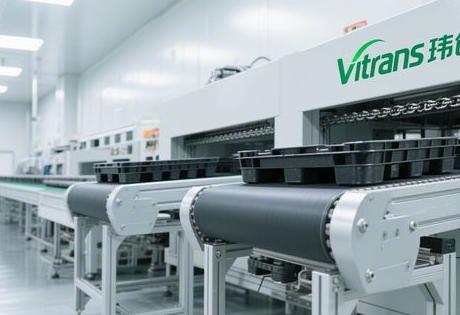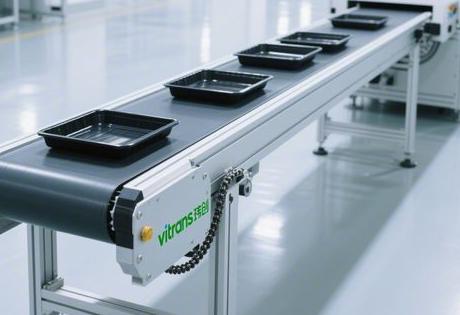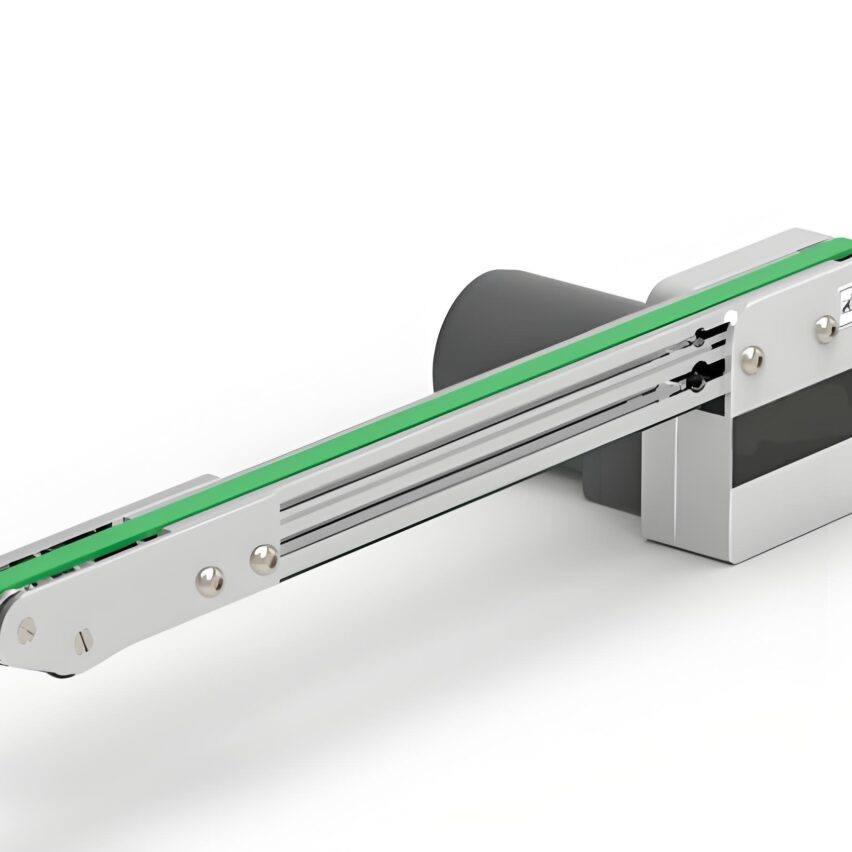The logic of customisation: a spatial revolution in closed-loop design
At the heart of the customisation of the ring multiplier chain liestopological reconstruction of space-Compresses 80 metres of traditional production line to 15 metres through vertical layering, achievingReduction of 62% sitetogether with40% Logistics Efficiency Improvement. It is essentially a secondary definition of industrial space efficiency:

- Cascading return designThe upper layer carries the production of workpiece boards, and the empty boards of the lower layer are rotated by jacking cylinders, completely eliminating the waste of space on the return journey of 20% in the linear production line;
- Centripetal station layoutThe operating points are equidistant along a circular track, and the radius of movement of the staff is compressed to less than 3 metres, as demonstrated in the case of the renovation of a textile mill in Shanghai in the 1940s.Three-fold jump in capacity density.;
- Historical plant compatibilityHighly customised guide rails (aluminium profile/carbon steel hybrid structure) to suit the height and column network constraints while retaining the traditional building frame.
personal insight: Customised closed-loop design is actuallyThe Art of Folding in Industrial Spaces--In the context of land scarcity in the Yangtze River Delta, enterprises replace two-dimensional planes with three-dimensional spaces, turning geographical disadvantages into production density advantages. Such as Changzhou, a new energy plant measured to show that the circular layout of the unit area soared to ¥ 186,000 / square metre output value, far more than the traditional production line of ¥ 73,000.
Industry penetration: cross-scenario conquests from automotive assembly to medical decontamination
Automotive Manufacturing
The instrument panel production line at Great Wall Motor's Hangzhou base uses theCustomised wider work boards(150kg/m² load bearing), combined with carbon nanotube shielding (pore size ≤ 5nm), at 96m/min conveying speed to maintain the±0.05mm positioning accuracy, the core breakthrough point is:
- gas-electric coupling systemEach station is equipped with an oil-water separator and a 4-point air connection to ensure the stable output of 0.5MPa air pressure;
- Conductive wheel-carbon brush structure: Addresses the need for charged detection with EMI BER compression to 10-⁹.
Medical purification scenarios
Implantable medical device production line needs a breakthroughBiological pollution control bottlenecks::
- Negative Pressure Clean Chamber Integration: Air filtration module embedded in the flow path of the workpiece to reduce particle concentration to ISO Class 1;
- Antibacterial composite materials: Nano-silver coating on the surface of the workpiece plate reduces the microbial growth rate by 90%.
Photovoltaic cell manufacturing
An enterprise has passed theTriple Vertical LoopAchieve three-level integration of silicon wafer-cell-module:
- Low Temperature Resistant Chain(-30°C) Suitable for freeze-drying sessions;
- ZrO₂-TiC nanoceramic tumbler(Resistant to 3.2 GPa) Resistant to alternating stress impacts at 16 times the speed.
Synergy Architecture: Dual Core Evolution of Drive and Control
Three-tier growth rate system
of a circular multiplier chain2.5-3 times the real growth rateDerived from composite technology coupling:
| growth rate (statistics) | Technical Principles | Performance Breakthroughs |
|---|---|---|
| Mechanical Growth Layer | Optimisation of the ratio of roller diameter D to roller diameter d | Base growth rate 2.5 times (D/d = 1.5) |
| magnetic boost layer | Guideway solenoid generates travelling wave magnetic field | Lorentz force reduction 18% |
| Fluid Reduction Layer | Microporous air pressure guide forms 5μm air film | Coefficient of friction reduced to 0.02-0.05 |
Dynamic control centre
Mitsubishi PLC + RFID chipof real-time interactions to achieve three major intelligent responses:
- The blocker is based on±0.1 second accuracyAdjust the release interval;
- Electromagnetic infinitely variable speed motor (4-20m/min) Light load periodEnergy saving 35%.;
- Corner jacking device 0.8 seconds to complete 90° load board turn.
Material breakthroughs: customised solutions for extreme working conditions
The high-speed fatigue paradox
When the speed exceeds 12m/min, the chain alternating stress reaches 7.8 times of the conventional line:
- Gradient sintering process: ZrO₂-TiC nanoceramic alloy tumbler compressive strength raised to 3.2 GPa (Super Tool Steel 200%);
- Honeycomb microcavity lubrication: Laser-etched oil reservoir structure (0.7 μL/mm²) with friction coefficient pressed to 0.02.
Corrosive environment response
Chemical production line customisation needs to be tackledAcid and alkali corrosion pain points::

- PTFE composite chain plate: Hydrofluoric acid corrosion resistance has been increased to 8,000 hours;
- Phase Change Microencapsulated Coolant(PCM-ME): 326J/g heat absorption by gasification at 75°C, volume expansion rate only 1.7%.
Future ecology: the leap from physical transport to data nerves
When the multiplier chain is superimposed on the industrial internet gene, it is giving birth to thefractal manufacturing network::
- closed loop energy chain: Vibration energy captured by piezoelectric ceramic array at the bottom of the rail (0.7kWh/m/day) to satisfy the sensor 80% power consumption;
- Neurosensory guide: Distributed fibre-optic sensors monitor stress waves in real time, providing 48-hour advance warning of fatigue rupture;
- digital twin: 5G edge computing enables millisecond corrections to process parameters, compressing line changeover time to9 seconds..
Exclusive foresight: Customised multiplier chains to evolve in 2026"Metabolic Intelligence"--The workpiece is embedded with a miniature fuel cell, which converts electricity with friction heat energy and realises self-powering of the RFID chip. Together with the dynamic reorganisation of the MES system, the efficiency of the mixed-line production of 48 products jumps 17 times, and the error of synchronisation between material flow and information flow is ≤0.1ms.
Ask yourself the core question.
Q: Why is a ring doubler chain more space efficient than a linear structure?
A: Eliminate the waste of 20% return space of linear production line through vertical layering (production layer/board return layer), combined with centripetal workstation layout, the land use is reduced by 62% + shorten the logistics path by 40%.
Q: What are the technical bottlenecks that need to be broken through for medical-grade customisation?
A: Need to implant negative pressure clean chamber (ISO 1 cleanliness) + antibacterial work plate (microbial breeding rate ↓ 90%) + ± 0.1mm positioning accuracy + static elimination device.
Q: How is thermal management achieved at 16x speed?
A: Phase change microcapsule coolant (PCM-ME) absorbs heat instantaneously (326J/g) at the friction hotspot, superimposed on the microporous air pressure guide 5μm air film heat insulation layer.














